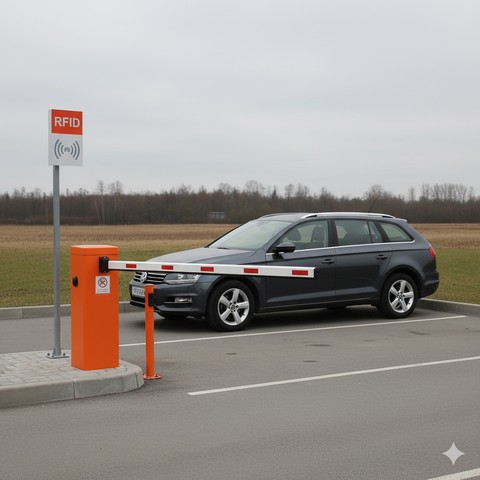RFID parking

RFID parking
For parking automation, there are many systems based on various vehicle and driver identification technologies: barcodes and 2D codes, video license plate recognition, short-range and long-range RFID systems. Each automatic identification technology has its advantages and disadvantages. Often, the most profitable and comfortable option for drivers is to combine several vehicle identification technologies.
As a rule, almost any parking entry and exit automation system can be supplemented with a long-range RFID system. UHF Gen-2 readers and tags operate at a distance of 4-10 meters, which allows for maximum throughput, minimum recognition time and maximum comfort for the driver.
RFID parking: how does smart parking access control work?
What is RFID parking?
RFID (Radio Frequency Identification) — is a technology that allows you to read information from electronic labels (tags) at a distance. RFID-parking — is a system that uses RFID-tags on cars and readers at the entrance/exit for automatic access control.
How does RFID-parking work?
- An RFID-tag is attached to the car (most often on the windshield).
- The reader detects the tag, checks it in the database.
- If access is allowed — the barrier opens.
- All events are recorded in the system: time, car number, owner.
Main components of the system
- RFID tag: passive sticker with a chip.
- RFID reader: device for reading tags.
- Antenna: transmits a signal to the tag.
- Controller: controls access.
- Software: registration, control, reports.
Advantages of RFID parking
- Process automation
- Fast reading (less than 1 s).
- Secure access.
- Detailed analytics and accounting.
- Integration with mobile services.
Where is it used?
- Residential complexes.
- Business centers.
- Shopping centers.
- Factories and warehouses.
- Government institutions.
Real case example
Business center in Kyiv, over 200 cars. An RFID system with a reading range of 6 m was installed. Cars received permanent tags, guests — temporary. Result: reduced congestion, automated access, traffic analytics.
How to choose an RFID system?
- Type of tags (passive/active).
- Reading range.
- Protection from weather conditions.
- Integration with current systems.
- Easy maintenance.
RFID parking — is an effective, safe and modern solution for automating access control to parking lots. The technology allows you to increase convenience, reduce costs and ensure a high level of transport accounting.





